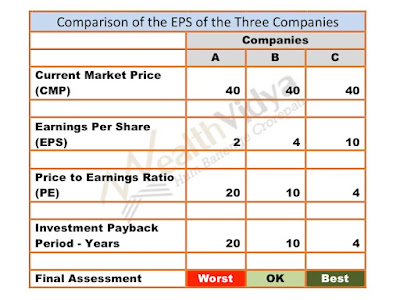Actual Question:
What is your story about getting
rich from stock market?
Answer:
Dear Friend!
I started my relationship with the stock market as a day
trader.
Being a chartered accountant by qualification, I dumbly
presumed that I know everything about companies, shares and finance and therefore
I am the most suited to play the stock market.
I set a goal to earn Rs.2500 a day. This is some somewhat
about 20 years back.
Most of the days I used to loose small sums - a couple
hundreds a day. Some days I used to end up with small profits - again a couple
of hundreds normally but occasionally Rs.500 or a thousand a day.
The constant need to watch the market, anxiety, fear of loss
and greed had their impact on my health. I developed high blood pressure.
One day, suddenly the BSE Sensex fell about 400 points
within a fraction of a second.
My bets backfired.
I lost almost all my life’s savings.
I vowed never to think about the stock market again in my
life.
A few years passed.
I kept my vow.
One day while my family was shopping in a busy local market,
I was occupying myself browsing through books being sold on the pavement, when
my gaze fell on a book, “The Intelligent Investor”.
Having already realised by now that I certainly was a dumb
investor, I wondered how different could an intelligent investor be.
But my inner voice sternly reminded me about the vow not to
dabble in stocks ever again in life. My mind reasoned with me that there was no
harm in reading - the vow pertained to real action only.
Curiosity eventually won.
I bought the book and devoured it.
It changed my life!
Benjamin Graham, who taught at Columbia University, wrote
the book. Warren Buffett had studied and apprenticed under Graham. Incidentally
for that particular edition Buffett had written the foreword.
I became a value investor.
I took Warren Buffett as my guru.
I resumed my relationship with the stock market, but under a
totally new avatar; a value investor.
I started regular investing; the period was somewhere
between 2006–2008.
Then the great crash, post Lehman Brothers, happened.
There was slaughter everywhere.
But it was a great opportunity for value investors.
I used to invest without fear, only to see my investment
depreciate as much as 25% in a few days. I used to buy more - without fear -
for I knew the shares were worth much more and are available at throwaway
prices.
Warren Buffet mad a huge investment in Bank of America.
I think the BSE Sensex plunged from 20,827 to below 8000 - a
crash of over 60%!
Unfortunately I had no big corpus to invest at that time.
By about March 2009 the Sensex had recovered to 15000
levels.
While the market was fast recovering on the back of a
globally coordinated stimulus program, I was worried that the recovery was not
sustainable and crash again.
I was not yet a seasoned value investor. While I had
mastered the art of buying I had not mastered when to sell. I am still not on a
firm ground when it comes to selling stock that have gained in price
significantly, and very little wisdom is available in the public domain.
Anyway, I sold the entire portfolio at one stroke, at about
250–300% profit.
On hindsight it was a bad decision for the market galloped
and I was thrown out of the market.
I re-entered the market after a few years.
In the mean time I had started the value investing blog “Wealth Vidya”. In February 2015 I created the
academic portfolio, “Portfolio 2K15” for teaching purposes. I have
been making regular investments of about Rs.20000 per month.
The results are as follows:
- Money Invested: About Rs.5,50,000/-
- Dividends Received: About Rs.40000/-
- Market Value: About Rs.8,00,000/-
- Un-realised gains: About 45% in about two years.
To conclude I am on the journey, on the sure path to riches,
even though I have not reached the goal post yet.
Anyway, what is the finish-line? Has Warren Buffett reached
the finish-line? Has he stopped investing?
It is the journey that matters - not the destination - is it not?
Thank you,
With Best Regards,
Anand





